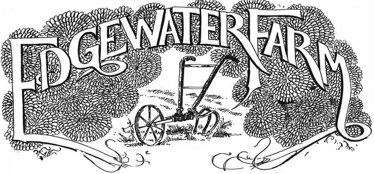Periodically we getblindsided by a question that leaves us speechless. One that stopped melastfall was “So, like when did you stop growingstrawberries?” I answered that we hadn’t, and assured her we still had6 acres last time I looked. It came upa couple of more times but the “Aha!!” momentdidn’t come until somebody phrased the question as“So, aren’t there anymore strawberries on the river road? Are they all down in Cornish now?”
Inow understandwhere the confusion comes from.
The fact is there are no strawberries of ours that are grown on the home farm in Plainfield, all of them are growingcurrently down at Ray and Jennysfarm at 949 Route 12A in Cornish, the old Putnam Homestead. Despite the fact weheavily advertised the PYO at that location and smeared the fact through social media last year, it appears as thoughsome folks still don’t know. And because people wonder why wewe moved the strawberries there, it deserves a shortexplanation.
Disease free soil. That is the short answer. It all has to do with crop rotation. Asany home gardener will tell you, if they putthe potatoes or tomatoes in the same location in the garden year after year, pretty quickly they will experiencea visible decline the crop’sviability or productivity. Problemsstart to show up on a regular basis, whether its disease or pests. That’s the point of rotation: to break the pest cycle and nutrient depletion of a particular crop. Without human intervention, thesoil and site itselfwill bestdictate what is suited to grow there…could be trees, cactus, hydrophytes, tallgrasses(remember what the pioneers found inthe Midwest beforeMr John Deere got them planting corn and soybeans? It was millions of acres of tall grasses.) So we may want to put our pumpkins or potatoes down on thedamp fields of Danielsmeadow, but Mother Nature out japanese knot weed and alders, because that is what the soils are pretty well suited for down there in a natural state. Anyway, farming in itselfis inherentlybad for the soil, so we try to ameliorate our human footprint through pesticide and fertilizerreduction, reducingtillage practices and…yep..rotating our crops.
Be patient. I am getting around to the point of why the berries are all in Cornish now.
So we grew strawberries on the home farm for35 years , give or take, and we did a pretty good job of getting away with it. We rotated and cover cropped as best we could, but it got harder and harder. With PYO you have to provide access and parking for people andcars (as well as the truck guy who brings the porta potties) . That takes up space, and that limited us to certain locations. Plantingcertain field are out of the question. Even though we covered cropped and rotated as best we could, our size and logistics dictated that we would have to replant land that had previously been in strawberries every 3-4 years, when it would have been betterif we had been able to wait twice that long. So we replanted into soils that had residual disease problems, and that presented problems for some of our favorite varieties, which we had to drop. Growingbecame more finicky. Although it was doable, it cost more to produce them.
So when the 2nd generation came back to farm, we looked at increasing our land basewith an eye towardgiving us more flexibility inour soil stewardship practices. Noquestion that row crop ag is pretty damn hard on the soil and all that lives within…hence the addition of the farm down in Cornish. Weplanted therein 2013 and the strawberries seem pretty happy to be there. As my buddy DougHarlow-a fruit grower from Putney and former strawberry grower- told meyears ago; “Any fool can grow strawberries on new ground…its when they go to replant it that they get their shorts handed to them.”
So we are in the honeymoon phase with the strawberries. Yeah, it’s a bit of an inconvenience to move the crew down there to work. But hopefullywe will have another 5 years before we have to rotate those strawberries back up here in Plainfield, and that should help a great deal in breaking the pest cycle. And it may be a bit longer drive to the PYO fields , but it will give you more time to finish the coffee you bought in West Lebanon.

